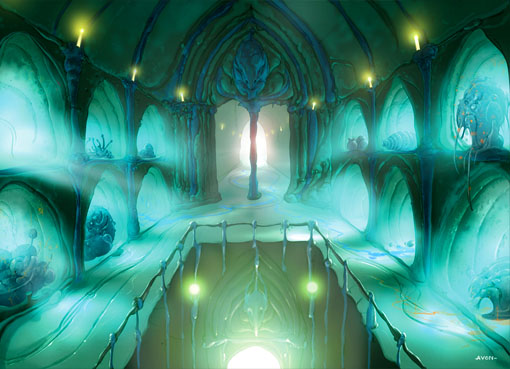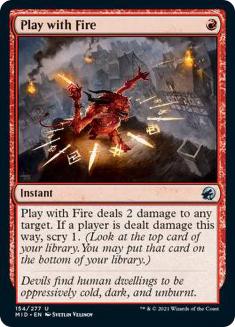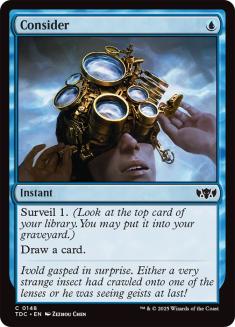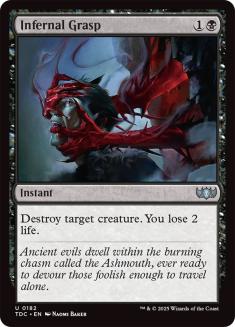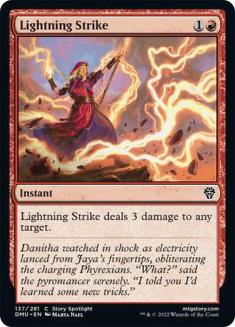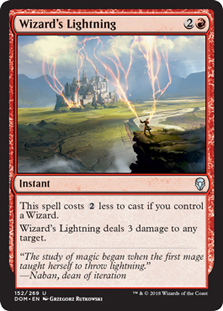Hello, and welcome to this edition of Sullivan’s Satchel. Full transparency: I’m in a bit of a lull. I suspect this experience is not too uncommon for people who are outside the Commander/Cube content creation channels, which go year-round and for which generating stuff out of whole cloth is much easier. I also just finished losing three matches of Modern in a row, which has crushed any enthusiasm I had for talking about Burn, except to complain about drawing a Fiery Islet instead of the fetch that it used to be so I couldn’t cast the Kor Firewalkers which would instantly blah blah blah etc.
Meanwhile, I am tentatively waiting for the Standard rotation along with everyone else, in part because I’m interested to see Strixhaven and Adventures in the Forgotten Realms in action without the overbearing nature of the previous year on top of it. The summer malaise isn’t new to Magic; if you’ve been around for as long as I have, you’ll recall that was the time where everyone was exhausted with the previous year and eagerly awaiting rotation plus a new big block.
Fortunately the nature of this column is such that I’m more at the mercy of the quality of questions from a handful of captured fans + spam that evades the Microsoft Office filters, and so I can trudge along just like everyone else. Related — the crack team over at StarCityGames.com figured out the issue with my email (“go to office.com”), and so [email protected] is against a viable way to reach me, along with my DMs on Twitter @BasicMountain.
For those of you new to the routine: against the best interest of my rapidly deteriorating mental health, I comb through those platforms to scour for the best questions about basically anything (bonus points if you ask regularly: without you I would be reduced to faking questions and laundering store credit through shifty friends and family), with the top question winning Question of the Week™ along with the aforementioned $25 in SCG credit.
From Ryan Potter:
Great question, and something that TCG designers have to grapple with all the time. Part of it is getting into the nitty-gritty about what constitutes a “strict upgrade” — Infernal Grasp might turn out to be better than Heartless Act overall, but it isn’t an obvious, no-context upgrade, and so I don’t think that qualifies. Assuming the overall rate isn’t ruinous, the top reason not to do strict upgrades is that competitive players like analyzing the nuances of different card choices, and those cards can strip that away. I don’t expect that to be the case with those two cards, and if one ends up being significantly more popular than the other, that can inform opposing deckbuilding choices in a satisfying way.
I find Consider to be much more obnoxious. It’s about as close as you can get to “strictly better” — yes, sometimes you can Opt away your Murktide Regent that you aren’t ready to draw just yet and shuffle it back in later, but that’s edge case enough that I’m happy calling it what it is. Opt is a tournament staple, and now is about the worst time to subsidize cheap cantrips that happen to work extremely well with cards like Regent and Dragon’s Rage Channeler. It feels very much like doing something for the sake of seeing if you can get away with it, and Opt is already a design not without risk. I’m really not sure what the incentive is to do this.
Strict upgrades on Shock are a tougher case for me. Assuming you take a year off from printing Shock (thereby not highlighting the “strictly better” case) I think it’s basically free; it isn’t like you can’t do better than Shock in the first place. Wild Slash has added some texture to Pioneer — sometimes the ferocious thing comes up — and that’s a fun edge case. That doesn’t come up if you paint yourself into a corner thinking you can’t do better than Shock, and so I think you’re better served just tearing off the seal and making the cards you think are appropriate for the format. I think that’s quite a bit different from inflating on Opt.
From Frank Smith:
Unfortunately I think it is time to let this one go. If you really love the deck or have budget constraints, then sure, whatever, but I can’t in good faith recommend the deck at this point. I also can’t justify sinking any more time into figuring out if I should be starting Flame Rift or Searing Blaze when I’m either dead on Turn 2 or I never resolve a spell the entire game. My next bit of Legacy exploration will be Reanimator with Grief — I was already happily playing Unmask, and an Unmask you can reanimate is very appealing. Sorry if I’m disappointing anyone with this response.
Two from Friend of the Satchel™ Ben Seitzman, granting me a reprieve from Magic-related questions:
I’ve recently gotten into Storefront Church (new album out!) and DIIV, who are MTG gamers to boot. In terms of retreads I’ve got in rotation recently — Lord Willin’ by Clipse; The Best of Smokey Robinson; Classic Nuts, Vol. 1 by The Beatnuts; the Beasts of the Southern Wild soundtrack; Illinois by Sufjan Stevens; and I keep thinking I want to listen to Neon Bible by Arcade Fire but then I just turn it off after “Keep the Car Running.” Weird early 2000s thing running through a lot of that stuff, don’t know if there’s anything to that though.
Allow me to put on my Kevin Pelton hat and give out some grades here.
Clippers: A+++++++++++++++++++++++++++++++
They’re kind of getting killed for this one for a number of reasons, but I think this trade is brilliant.
- Roster was at seventeen players. A three-for-one gets them to fifteen, allowing them to avoid waiving someone or sending a young player down to the G League (many of whom the Clippers traded up to get in the recent draft.)
- Eric Bledsoe, for all the warts, is the best individual basketball player in the trade.
- With the Clippers’ payroll/tax situation being what it is, I’d rather have Bledsoe under contract for 2022-23 than be priced into offering Beverly an over-market deal to retain him next summer.
- The Clippers have been short of on-ball juice besides their top two guys for a while now. I’d rather have someone who can get from the three-point line to the rim than another guy standing in the corner waiting for someone else to make a play.
Grizzlies: A+++++++++++++++++++++++++++++++++++++++++++
Getting off the additional year of Bledsoe’s albatross without giving up picks and getting useful players in return is a huge win. Don’t let my enthusiasm about the Clippers side of this imply that I think this is anything other than a home run for Memphis as well. The rare win-win.
From Peter Leja:
Some of it depends on the level of transparency. A format where Evolving Wilds is a high pick because landfall is a mechanic? That’s cool. A format where you should take duals really highly because the best deck is four- or five-color soup and you can just goof-grab whatever assuming you take fixing highly enough? A lot less cool. I don’t think it’s particularly fun to draft that way even if you’re very competitive and “get the joke” (eventually everyone else gets it, too) and it’s very off-putting to more casual or novice drafters. The Standard release formats in question have erred way more towards the latter than the former, so I haven’t been the biggest fan of a lot of the executions there.
Cube is a different animal. I think choosing between fixing and powerful cards even inside of your color combination is stimulating, and Cube is deep enough to give lands context beyond just “make A or B mana”. It also errs towards more experienced players. I think some Cubes go overboard with the number of lands as a percentage of the card pool but I don’t mind putting more of a spotlight on them in general there.
Lastly, the Question of the Week™, from LavaLamp:
Awesome question, and it gives me a little room to clarify to boot. There are lots of cards that are ostensibly fun or at least neutral that are ruined by rate. Lightning Bolt is a good example of this — fun, dynamic, but just too strong for Standard play. Doing Lightning Strike is a great thing to do — still plenty fun and good enough for Standard, but not a massive rate issue.
Better yet, do Wizard’s Lightning some amount of the time, too. Giving someone the taste of actually playing with Lightning Bolt is incredibly seductive and Wizard’s Lightning solves the problem in two novel ways — one, since the player has to do something specific to get it, hopefully it constrains the overall power level of the deck it appears in even if it’s very strong some amount of the time, and two, there’s a cleverly masked opportunity cost. Lightning Bolt is sick on the first turn as a removal spell as well, and Wizard’s Lightning can never do that barring extraordinary effort. That’s masterful design and something worth seeking out.
Compare that to, like, Strip Mine but it requires more mana. What are you hoping to do here? I guess give the experience of playing with something forbidden, but Strip Mine sucks, and any effort to capture it has to be priced reflecting how awful it is to have it come up with any regularity. Any design team spending time in these pursuits is wasting effort for little upside, while the opposite is true of Wizard’s Lightning. Hope that clarification helps.

